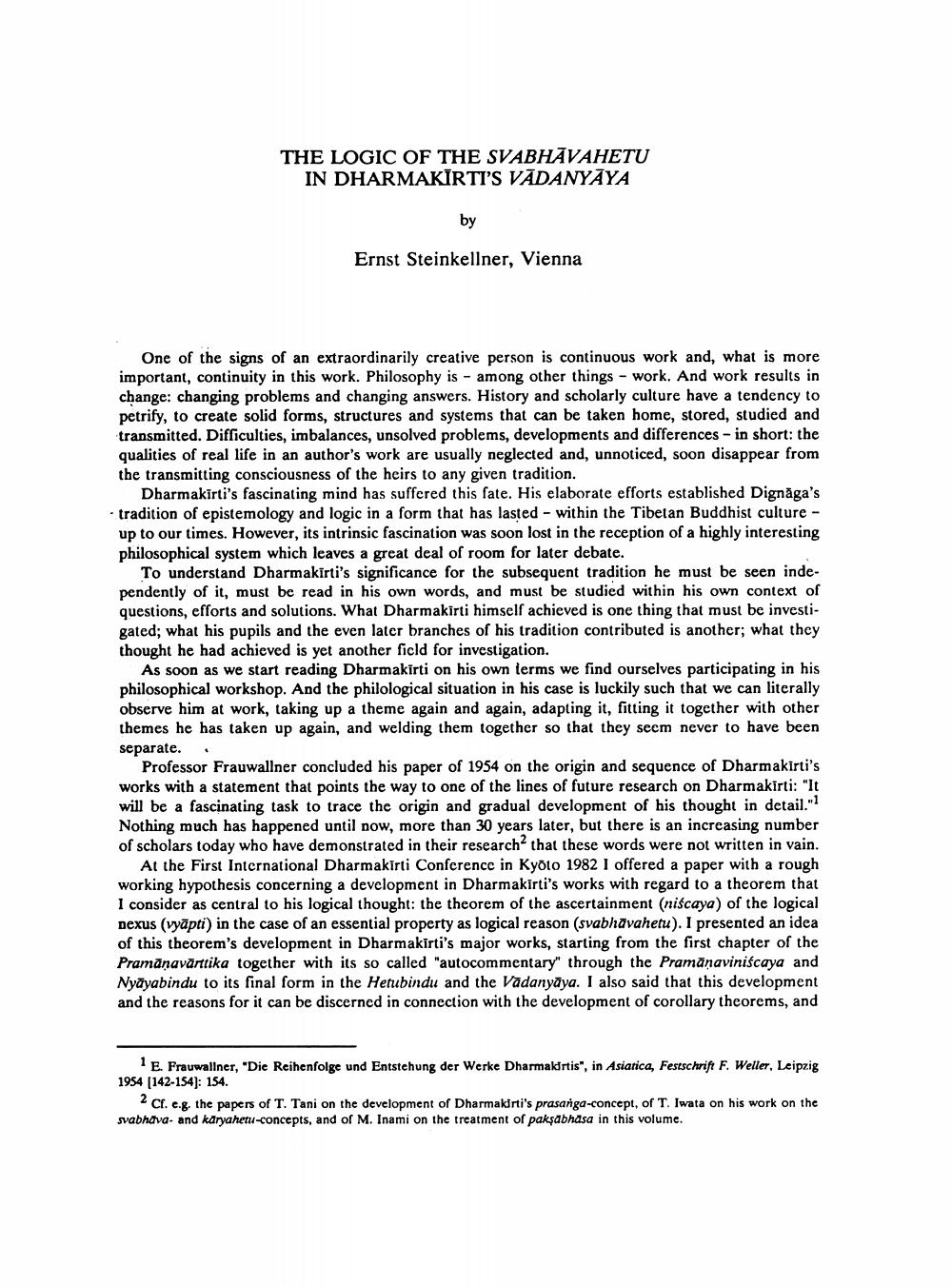Book Title: Logic Of Svabhavahetu In Dhharmakirtis Vadanyaya Author(s): Ernat Steinkellner Publisher: Ernat Steinkellner View full book textPage 1
________________ THE LOGIC OF THE SVABHĀVAHETU IN DHARMAKĪRTI'S VĀDANYAYA by Ernst Steinkellner, Vienna One of the signs of an extraordinarily creative person is continuous work and, what is more important, continuity in this work. Philosophy is - among other things - work. And work results in change: changing problems and changing answers. History and scholarly culture have a tendency to petrify, to create solid forms, structures and systems that can be taken home, stored, studied and transmitted. Difficulties, imbalances, unsolved problems, developments and differences - in short: the qualities of real life in an author's work are usually neglected and, unnoticed, soon disappear from the transmitting consciousness of the heirs to any given tradition. Dharmakirti's fascinating mind has suffered this fate. His elaborate efforts established Dignāga's tradition of epistemology and logic in a form that has lasted-within the Tibetan Buddhist culture - up to our times. However, its intrinsic fascination was soon lost in the reception of a highly interesting philosophical system which leaves a great deal of room for later debate. To understand Dharmakirti's significance for the subsequent tradition he must be seen inde. pendently of it, must be read in his own words, and must be studied within his own context of questions, efforts and solutions. What Dharmakirti himself achieved is one thing that must be investigated; what his pupils and the even later branches of his tradition contributed is another; what they thought he had achieved is yet another field for investigation. As soon as we start reading Dharmakirti on his own terms we find ourselves participating in his philosophical workshop. And the philological situation in his case is luckily such that we can literally observe him at work, taking up a theme again and again, adapting it, fitting it together with other themes he has taken up again, and welding them together so that they secm never to have been separate. Professor Frauwallner concluded his paper of 1954 on the origin and sequence of Dharmakirti's works with a statement that points the way to one of the lines of future research on Dharmakirti: "It will be a fascinating task to trace the origin and gradual development of his thought in detail."! Nothing much has happened until now, more than 30 years later, but there is an increasing number of scholars today who have demonstrated in their research that these words were not written in vain. At the First International Dharmakirti Conference in Kyoto 1982 I offered a paper with a rough working hypothesis concerning a development in Dharmakirti's works with regard to a theorem that I consider as central to his logical thought: the theorem of the ascertainment (niscaya) of the logical Dexus (vyāpti) in the case of an essential property as logical reason (svabhāvahetu). I presented an idea of this theorem's development in Dharmakirti's major works, starting from the first chapter of the Pramāņavārttika together with its so called "autocommentary" through the Pramāņaviniscaya and Nyāyabindu to its final form in the Hetubindu and the Vadanyāya. I also said that this development and the reasons for it can be discerned in connection with the development of corollary theorems, and E. Frauwallner, "Die Reihenfolge und Entstehung der Werke Dharmakirtis", in Asiatica, Festschrift F. Weller, Leipzig 1954 (142-154): 154. 2 Cf. c.g. the papers of T. Tani on the development of Dharmakirti's prasanga-concept, of T. Iwata on his work on the svabhava- and karyahetu-concepts, and of M. Inami on the treatment of paksabhasa in this volume.Page Navigation
1 2 3 4 5 6 7 8 9 10 11 12 13
